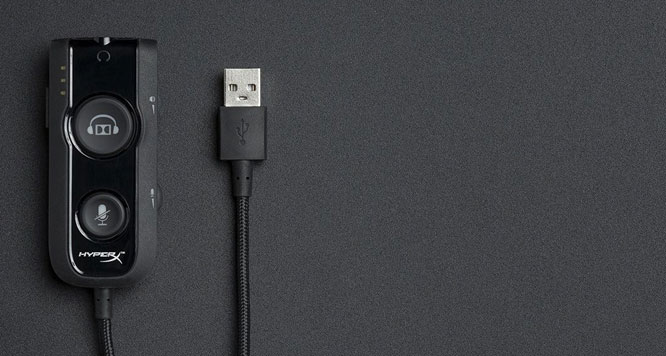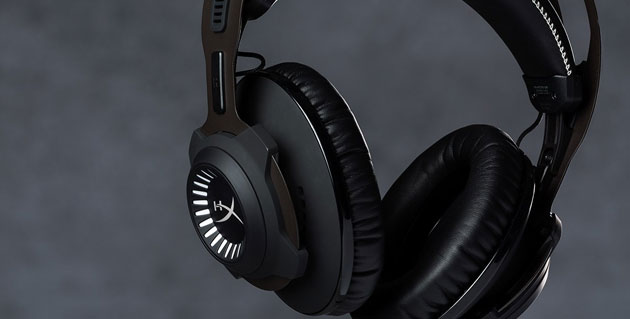by Lydia Rivers
Note: This review focuses on how the item interacts with my disability. If you wish to read about technical specifications and general features, I recommend Techradar’s comprehensive review. This is not a paid review or endorsement.
Hello everyone! My name is Lydia, and I’m a disabled gamer, writer, and visual novel designer. I’m constantly listening to all kinds of things to help me concentrate and relieve stress; it’s common for me to exceed ten hours’ worth of daily listening to music and other sound-intensive media, whether I’m active at work or sick in bed. I have chronic migraines, dyslexia, and clinical ADHD, so when it comes to a headset, I’m as needy as they get! Numerous symptoms interfere with my ability to utilize most headsets on the market, and it’s difficult to know where to begin because of the chronic lack of information addressing my concerns. Well, I recently purchased a HyperX Cloud Revolver S, and here is my experience for those in a similar predicament!
On any given day, my headset must be able to:
- Play Mendelssohn’s Violin Concerto in E Minor without making me want to die trying to escape tinnitus (it’s got sky high violin notes).
- Switch to trance without stabbing my brain whenever I’m distracted by ambient noise.
- Let me hear the wind’s direction in video games.
- Avoid crackling and air puffs when I participate in a podcast.
- All the above without pinching my nerves or overheating my ears.
The HyperX Cloud Revolver S does that for me, and more! Here’s how it all breaks down.
The first thing I noticed when I opened the package was the headset’s tangle-free cord— a huge plus for my ADHD self. When I twist, turn, and bounce in my chair, I don’t have to spend any precious minutes fixing the consequences of hyperactivity. The cord is about ten feet long, which is a godsend given my penchant for tunnel focus and forgetting that I’ve got something attached to my head. Now when I leave my desk, I have ample time to remove it, instead of getting it torn off for me by negligence and a taught cord (because forty-two percent of my life is a cartoon reel).
Next, I noticed some useful details about the audio control box. It has large toggle buttons for the mic and surround sound; they’re much easier for me to target and press than those belonging to other headsets. They illuminate when activated, which helps me remember which buttons I’ve pushed while distracted. It also has wide volume dials which make them easier for me to operate than their narrower counterparts. The control box itself also has a clip on the back, which allows me to secure it to my thumb/wrist splint for easy access! The fact that I don’t have to fumble around my face and ears goes a long way toward my long-term comfort levels.

It is interesting to note that, due to its solid steel frame, this headset is heavier than many others on the market. On the surface, this would seem counter-intuitive to my needs, but I found something unexpected once I tried them on. Rather than gripping my skull with the entire headband and upper ear cups like most models, the weight rests in the top center of headband and the lower ear cups—a clear departure from the norm, not to mention a blessing for my scalp sensitivity. The steel frame retains its flexibility and balance while remaining sturdy, whereas most plastic frames I’ve tried either lack in durability, or are too stiff for my comfort. The headset’s padding does its job well, and the overall effect is a beautiful lack of pressure points (even after ten hours of continuous wear). An added bonus: the padding’s surface doesn’t cause my long hair to tangle at a quantum level.
I am equally satisfied when it comes to sound. Despite my tinnitus, I can hear whenever pianists depress the pedals during an acoustic composition. I can separate all the voices in layered vocals, and I can listen to violin concertos without pain. My head doesn’t start throbbing in time with trance, and I can listen to all the screaming folk-metal I want without screaming back for all the wrong reasons. When I fired up Borderlands 2 to experiment with diverse game sounds, I was able to locate nearby monsters by their noises instead of relying on the minimap. I was able to hear the direction of wind gusts, bullet trajectories, and footsteps. The soundtrack came through wonderfully, of course, and best of all? I could hear the nuance and resonance within the voice acting, which is something I greatly enjoy.
All in all, I’m extremely satisfied with the HyperX Cloud Revolver S headset’s accessibility for my needs. If I were to ask for one improvement, it would be to make the mic just a bit stiffer. The slightest pressure adjusts its position, which can be bothersome for someone who makes absent-minded movements while they concentrate.
Lydia Rivers is a writer who enjoys service dog advocacy, gaming, and nerdy fandoms. You can find her on Twitter, @planet_lydia.

